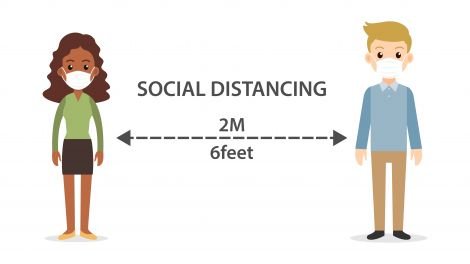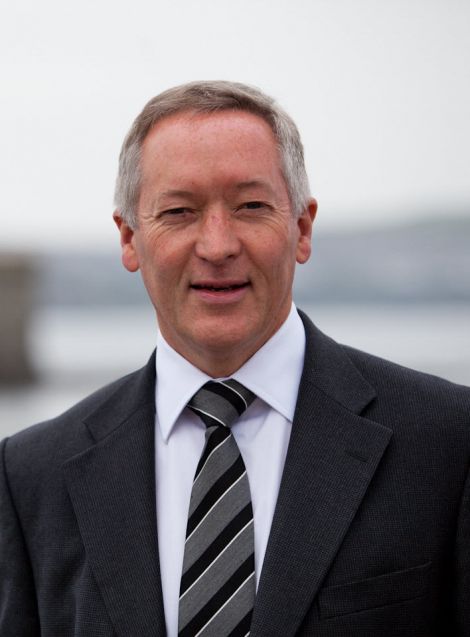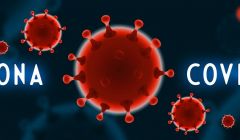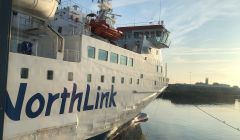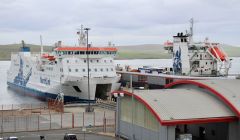Coronavirus / Shetland should stick with two-metre distance, says health chief
Business forum hears of plans to ease transport restrictions
THE CHIEF executive of NHS Shetland has rejected suggestions by a leading microbiologist that social distancing could be reduced to one metre in the isles.
Michael Dickson said that the recording of a positive test for Covid-19 on a gas plant worker last week after eight weeks of negative tests proved that there was no room for complacency.
Dickson was responding to a report yesterday (Monday) that Aberdeen University’s Professor Hugh Pennington said that there was a good case for easing social distancing rules in Orkney, Shetland and the Western Isles – the “safest [places] in the country”.
Dickson said: “In Shetland we contained the spread of Covid-19 after a period of very high re-infection because the local population followed national guidance.
This guidance includes:
- Social distancing (2m rule);
- Washing hands with soap and water;
- Avoid touching the face;
- Avoiding socialising especially in groups;
- Observing cough hygiene;
- Staying home.
He added: “The recent positive test – which ended nearly eight weeks of negative tests – highlights that you cannot be complacent about this virus which is spread in airborne droplets – most often through a sneeze or a cough.
“There is still no vaccine and there is still no cure. NHS Shetland will continue to ask the Shetland community to follow national guidance until the government believes it is safe to relax the rules.
“Even after this, everyone must remember that the only way to prevent infection is to keep a safe distance from other people and to follow the other infection control protocols mentioned above.”
First Minister Nicola Sturgeon meanwhile said that 15 new positive cases were confirmed during the last 24 hours in Scotland. A total of 986 patients are in hospital with confirmed or suspected Covid-19 – an increase of 116 from Monday.
Become a member of Shetland News
She said that Scotland had been “reasonably successful” in suppressing the virus and added: “I want now to get all of Scotland moving out of lockdown.”
But she also warned that hurrying the pace of recovery threatened to put the whole country back to square one with coronavirus reinfections.
Sturgeon announced a “further £230m” to help the economy pull through the crisis including money to help public transport prepare for social distancing.
Reducing the social distancing rule to one metre could have implications for the speed of return of the economy as well as for the spread of the virus.
The Scottish Government is expected to reveal this week guidance for the hospitality and creative industries, and also on house moving as well as updated guidance for manufacturing.
Serco NorthLink’s managing director Stuart Garrett said during a meeting of Shetland Business Resilience Forum that reducing social distancing to one metre on the Hjaltland and Hrossey ferries could near triple the vessels’ passenger capacity from 120 to 350 passengers.
He said that there would be a significant challenge for capacity when travel restrictions were eased.
Garrett said that 54 passengers were refused travel last week as non-essential.
Passenger numbers have been down 93 per cent during the pandemic, with 9,702 cancellations by yesterday.
NorthLink is still implementing a six-week rolling programme of cancellations but expects the government to announce an easing of tourism restrictions on 15 July.
NorthLink may introduce a quota system for traveling initially once movement restrictions are eased, but social distancing remains in place.
A number of spaces would need to be reserved daily for essential workers and NHS patients. A percentage of capacity would also need to be set aside for local people traveling to the mainland. The friends and family and visitor passenger categories will also need to be accommodated when restrictions ease.
Meanwhile Loganair yesterday doubled its flights between Sumburgh and Aberdeen to two a day shared with Kirkwall.
It also introduced a requirement for passengers to wear face masks as a substitute for social distancing which the company says is not possible on an aircraft. Flights will operate at full capacity where demand requires.
Loganair chief executive Jonathan Hinkles told the forum that four people had been turned away as passengers last week and that restrictions would remain in place until Transport Scotland issued alternative instructions based on government guidance.
He said refunds were now being processed more quickly and those wishing to rebook up to 12 months in advance could do so free of charge until Friday.
He also revealed that there were cautious plans to reinstate the Glasgow and Edinburgh routes in early July, although this may be timed to coincide with the lifting of restrictions on the tourism industry, expected to be announced on 15 July.
Aberdeen routes are expected to go back to non-stop at this point also. The Inverness route is not expected to be reinstated until at least September and the Bergen route will not operate this summer.
However, the airline hopes to be able to open the summer 2021 schedule early so that advance bookings for next year can be made within the next few weeks.
Hinkles advised the meeting that he did not expect to see an increase in fares when increasing capacity as passengers needed to be encouraged to use the services and be assured it was safe.
He also confirmed that all Saab 2000 aircraft have now been replaced with the ATR turboprops and that capacity could be increased quickly after 15 July if booking trends show it is required.
Become a member of Shetland News
Shetland News is asking its many readers to consider paying for membership to get additional features and services: -
- Remove non-local ads;
- Bookmark posts to read later;
- Exclusive curated weekly newsletter;
- Hide membership messages;
- Comments open for discussion.
If you appreciate what we do and feel strongly about impartial local journalism, then please become a member of Shetland News by either making a single payment, or setting up a monthly, quarterly or yearly subscription.






